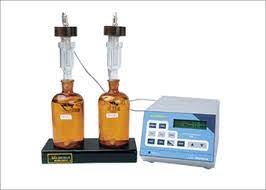Table of Contents
Introduction:
Bod determination is often considered as one of the most important part of determining the water quality as it determines its purification and its use for proper usage. It determines the amount of organic matter and its decomposed state in the water specifying its application on priority basis.
Related theory:
It is defined as:
“The decomposition of the organic substances present in the water sample taken from the sewage or river with specific aerobic treatment under consistent time and temperature usually considered as 5 days and a temperature of about 20 adopted globally.”
The sewage water and the pollution nowadays are such a disaster to the atmosphere that they may affect the environment adversely. This Bod test is performed for the determination of the impurities and the poisonous aspects of the sample to be disposed in a safe way. this has its major application in determining the treatment of such waters and their treatment plants designed.
Figure 1 B.O.D Apparatus
The test is performed for at least three set of samples with changed concentrations and two bottles are adopted for each of it to have an accurately determined amount of oxygen dissolved in it and for relating solutions the result is usually taken as the greatest of all. The concentrations of the sample however adopted are determined through certain standards as follows:
- For waste of industries (strong) it is taken equivalent to 0.5, 1 or 0.1%.
- For the sewage in the raw or settled form it is taken as 5, 1 or 2.5%.
- For the effluents being oxidized it is taken as 25, 5, or 12.5%.
- For the water obtained from the polluted river it is almost either 100, 25 or 50%.
Apparatus:
- Bottles used for B.O.D determination with a capacity of 300mL.
- An incubator for B.O.D.
- A Burette.
- A pipette for water/solution transfer.
- An air compressor.
- A cylinder for measuring.
- Water in its distilled state.
- A buffer solution of phosphate.
- A solution of calcium chloride.
- A solution of ferric chloride.
- Solutions of an acid and an alkali.
- A solution of sodium sulphite.
- A different set of reagents for the determination of the dissolved oxygen.
- A seeding agent.
Procedure:
- The sample is poured in a measuring cylinder with a 5-liter capacity where usually 3 liters of water being distilled is adopted for each sample.
- All the solutions listed above in the apparatus are measured 1 ml /each and added for each liter of water to be added.
- The sample is now seeded with a settled sewage (domestic) of 1-2mL.
- The diluted water in the flask is saturated for 30 minutes (at least) by using a clean supply of compressed air.
- The solutions with high alkalinity or acidity are to be neutralized to a Ph of 7.
- The residues of chlorine are deteriorated by exposing it for at least 1 or 2 hours in air or the addition of sodium sulphate (few drops in mL).
- The sample is taken as per the standard concentrations suggested (as above).
- The calculated required(calculated for 650 mL solution) quantity of sample is added in a measuring cylinder with a capacity of 1000mL along with the diluted water added equivalent to 650mL.
- The solution is now mixed in the cylinder and added in two separate bottles one for the incubation process and the other for the D.O concentration.
- The other samples are prepared in the same way.
- The water for dilution is now added in two different bottles of B.O.D for both the purposes incubation and dissolved oxygen.
- The set of bottles are lately placed in the incubator for at least 5 days at a temperature of 20.
- The initial dissolving of the D.O. is determined and then after 5 days is noted.
- The B.O.D of the samples are calculated.
Observations:
| Sample# | Concentration | Dissolved oxygen (mg/L) | B.O.D. mg/L
(for 5 days at 20) |
|||
| Initial | Final | |||||
| Bottle # | D.O. Value | Bottle # | D.O. Value | |||
| #1 | —– | —– | —– | —– | —– | —– |
| #2 | —– | —– | —– | —– | —– | —– |
| #3 | —– | —– | —– | —– | —– | —– |
| #4 | —– | —– | —– | —– | —– | —– |
| #5 | —– | —– | —– | —– | —– | —– |
Calculations:
The following parameters are used:
P, the fraction to be used in decimal = ——– (say for 0.1%= 0.001)
D1, the amount of initial oxygen being dissolved = ——— mg/L
D2, the amount of oxygen being dissolved after 5 days = ——— mg/L
The B.O.D value is determined as:
B.O.D = (D1-D2)/P = ————mg/L
Comments:
The amount of B.O.D selected is that which is similar or approximately equivalent to 1mg/L residual and a depleted amount of almost 2mg/L. the observations with same values are to be prioritized on the basis of the maximum D.O.
Precautions:
- The accurate quantities are to be measured and properly observed.
- The materials are to be handled with care.
- The apparatus used should be properly cleaned.
- The calibrated instruments should be properly marked.






